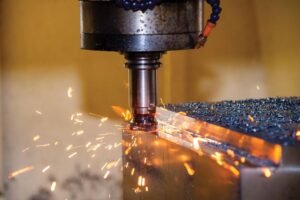Material selection is a complex decision in the machining process, involving multiple aspects such as material cost, processing technology, product performance, and long-term sustainability. Different material characteristics can affect processing efficiency and reduce costs, while also ensuring the final performance and quality of the product.

The selection of materials has a significant impact on the machining process, and the following are some main aspects:
Processing Difficulty Level
Different materials have different physical and chemical properties, which determine the difficulty of processing. For example, materials with higher hardness, such as hard alloys or certain high-grade steels, have greater machining difficulty and may require the use of special cutting tools or higher machining accuracy.
Processing Speed and Efficiency
The cutting performance of materials can also affect machining speed and efficiency. For example, materials that are easy to cut can use higher cutting speeds, thereby reducing production time and costs. The higher the hardness of the material, the more difficult it is to process, and the faster the tool wears, which increases maintenance costs and time. Meanwhile, hard materials may cause problems such as fractures during the processing.
Different materials may exhibit different surface qualities after processing. Some materials may easily achieve high surface finish, while others may require additional processing steps such as grinding or polishing to achieve the desired surface finish.
Overall, selecting materials correctly can optimize the production process, improve production efficiency, reduce tool wear, lower production costs, and ensure product quality. Reasonable evaluation and selection of suitable materials are crucial before any machining project begins.

